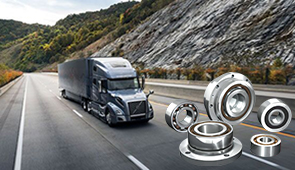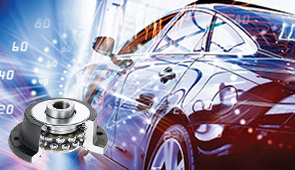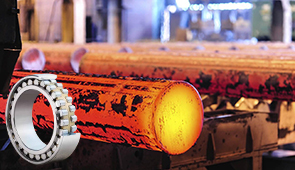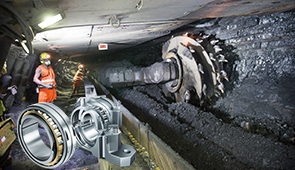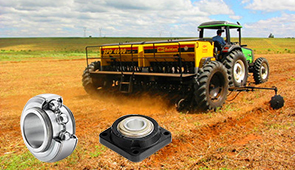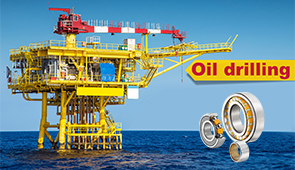Unlocking the Secrets of High Precision Bearings: Speed, Accuracy, and More
When it comes to modern engineering and manufacturing, high-precision bearings are an indispensable component driving innovation across industries. These sophisticated mechanisms are designed to deliver unparalleled accuracy, durability, and efficiency, making them critical for applications that demand exceptional speed and reliability. From aerospace and robotics to medical equipment and automotive advancements, high precision bearings play a pivotal role in enhancing performance and productivity. This article will unveil the intricate details behind their functionality, explore their impact on industries, and provide insights into how they have revolutionized modern technology. Whether you’re an engineer, a manufacturer, or simply intrigued by the mechanics of precision, this comprehensive guide will shed light on the science and engineering behind these powerful tools, without divulging all the details upfront.
What are High Precision Bearings and Why are They Important?
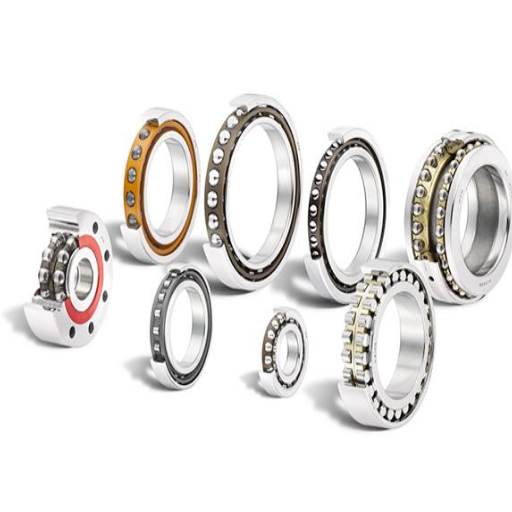
Understanding the Basics of Precision Bearings
Precision bearings are types of bearings made to provide the greatest levels of accuracy, high speeds of rotation, and great reliability in demanding applications. These bearings significantly reduce friction and have the ability to support mechanical structures that need control over motion. Their distinct configurations allow machines to perform efficiently under changing loads and extreme conditions, which is vital for the aerospace, robotics, and medical industries.
An example of a bearing that achieves tight tolerances is a high precision bearing. They are crafted using advanced manufacturing methods and superior quality materials. The increased accuracy and precision helps improve the alignment and stability of rotating components, preventing vibration and wear. Also, precision bearings use advanced lubrication techniques to further enhance their performance and lifetime, making them essential in applications where extreme precision or continuous operation is needed.
The importance of precision bearings lies in their ability to improve the efficiency and accuracy of mechanical systems. For instance, in the space industry, they ensure dependability for jet engines and navigation systems, whereas in robotics, they enable accurate, repeatable movements. Allowing systems to operate with high dependability and minimal energy wastage makes precision bearings invaluable to modern technological advancements. It is because of the intricate engineering level and performance characteristics that are observed in high-tech machinery that these components are considered foundations.
Key Applications of High Precision Bearings in Industry
The aerospace sector relies heavily on high precision bearings due to their capabilities in withstanding extreme temperatures while still being able to maintain consistent performance. They are extensively used in jet engines owing to their unparalleled ability to endure high speeds and immense thermal and mechanical forces. Furthermore, high precision bearings are critical in navigation systems for maintaining flight control during operations, as they need to be stable and reliable through changes in altitude. Their unmatched capabilities pose a crucial contribution towards fuel efficiency and safety, ensuring their irreplaceable position in aerospace engineering.
In the sphere of medicine, high precision bearings are crucial for sophisticated diagnostic as well as surgical tools. Machines like the MRI, CT scanners, and even robotic surgical systems depend heavily on these bearings to provide accurate motion and also repeatable actions. In these applications, patient safety as well as diagnostic results reliability hinges on the high precision calibration, in which the mechanical parts are executed smoothly. The same precision bearings are crucial constituents used in dental handpieces and other small medical tools requiring exceptional precision under difficult working conditions.
Just like other sectors, high precision bearings positively impact the robotics and automation sector. These bearings ensure minimal errors in movement and repeated tasks, making them crucial to manufacturing, assembly lines, and automated warehouses. Also, apart from motion control, they improve the efficiency and life span of buwot components and help to decrease expenses on maintenance and repairs. Because bearings also effectively deal with axial and radial loads, they help meet the increasing need for automation in different industrial areas.
The Role of Precision Bearings in Enhancing Machine Performance
Precision bearings are pivotal for effectiveness, functionality, and dependability in machineries. They ensure efficient rotational movement while reducing friction between mobile components. This leads to better machine functionality and greater operational efficiency. Precision bearings are essential as they mitigate energy losses due to friction, enhancing stability and consistency in high-speed operations.
Supporting and balancing massive loads is another remarkable function of precision bearings. Designed to carry radial and axial loads, common in industrial machines, these bearings support complex loads. The forces are balanced and supported on the surfaces evenly, which reduces wear and tear on the parts while increasing the overall life of the equipment. This proves extremely useful in high precision matters like aerospace engineering, robotics, and medical apparatus.
Furthermore, precision bearings improve the general machine output by cutting down the vibration and noise produced. This optimizes the output accuracy in performing various processes like cutting, drilling, and assembly. Bearings precision-made with advanced techniques high high-quality materials ensure no abrupt failures. By fusing toughness, load-bearing strength, and lowered friction, precision bearings stand as the fundamental driving component in driving industrial automation and modern engineering.
How Do Super Precision Bearings Differ from Standard Bearings?
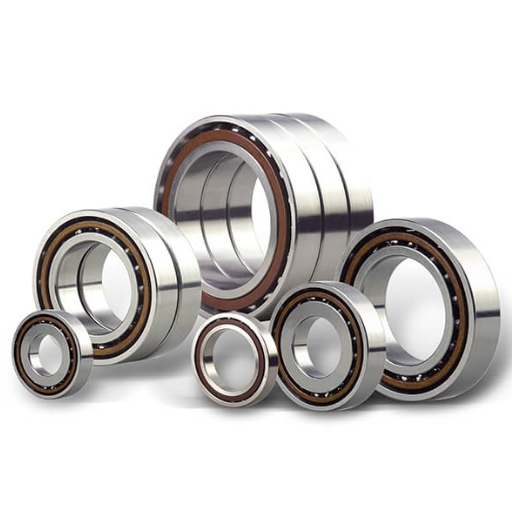
Comparing Super Precision Bearings and Standard Bearings
Like with any other class of bearings, super precision bearings differ in their tighter tolerances, higher accuracy, longer lifespan, and better performance in harsh working conditions.
| Aspect | Super Precision | Standard |
|---|---|---|
|
Fit |
Ultra-tight |
Moderate |
|
Precision |
Exceptional |
Average |
|
Durability |
Extended |
Limited |
|
Efficiency |
High |
Basic |
|
Sound |
Minimal |
Noticeable |
|
Speed Limit |
Elevated |
Lower |
|
Composition |
Advanced |
Standard |
|
Expense |
Premium |
Economical |
|
Usage |
Specialized |
General |
|
Upkeep |
Rare |
Frequent |
Key Features of Super Precision Bearings
Super precision bearings offer enhanced performance standards compared to standard bearings due to their intricate design. The following are the super precision features that make them stand out:
- Exceptional Dimensional Accuracy: Micro-level tolerances are used to manufacture super precision bearings which allow perfect alignment and almost zero operational deviations. This degree of accuracy allows seamless movements in machines, especially in delicate aerospace applications, robotics, and CNC machinery, where close tolerances are needed.
- High Rotational Speed Capability: These bearings are built to operate at high speeds while still performing. They maintain efficient performance under high-speed conditions due to advanced lubrication systems and optimized internal geometry, which reduce heat generation.
- Enhanced Load-Bearing Capacity: Radial and axial forces with super precision bearings are powerful due to high-carbon chromium steel or hybrid ceramic elements. The enhanced materials give greater load-bearing strength, which makes them easier to implement.
- Low-Vibration and Noise Levels: Precise designing of the raceways and rolling families in super precision bearings help them achieve low levels of vibration and noise. This is quintessential for use in medical devices and in the manufacture of semiconductors where silenced operation is mandatory.
- Superior Heat Resistance and Stability: These bearings often utilize specialized heat-treated steels and are paired with optimized lubrication solutions to aid them in resisting with thermal expansion and allowing smooth functioning under high temperature conditions.
- Longer Service Life: With the use of high-grade materials, cutting-edge surface finishing techniques, and modern sealing arrangements, super precision bearings demonstrate significantly enhanced longevity that minimizes the need for maintenance and downtime during crucial operations.
The combination of these characteristics with super precision bearings enables unmatched functionality in high demand settings while guaranteeing sustained efficiency, reliability, and durability in commercial and industrial applications.
Benefits of Using Super Precision Bearings in Aerospace
- Enhanced Rotational Accuracy: Super precision bearings are designed for exceptional rotational accuracy, which is essential in aerospace uses like gyroscopes, turbine engines, and navigation systems. There is minimal runout, which guarantees precision with stable operation even at high speeds.
- High-Speed Capability: These bearings are also designed to withstand multi-million dN. Super precision bearings are tailored for the extreme speed requirements of aerospace systems. With advanced lubricants and altered internal geometries, these bearings maintain performance at rotational speeds over 1.5 million dN. (bearing bore diameter in mm multiplied by RPM).
- Reduced Weight for Fuel Efficiency: The fuel efficiency of the aircraft is directly improved with the use of hybrid or ceramic materials, as super precision bearings are less heavy than traditional bearings. Lightweight components aid in reducing the overall weight of aerospace parts.
- Superior Performance Under Harsh Environments: Super precision bearings are constructed with heat-resilient materials and coatings which ensures extending operating temperature ranges and sustaining performance are possible without compromising performance. Thermal stability is achieved when subjected to extreme jet engine temperatures, and wide temperature fluctuations from cryogenic conditions in space.
- Durability and Reliability: Due to advanced sealing technologies and corrosion resistance components, these bearings possess greater wear resistance along with st longevity. This minimizes maintenance intervals and ensures reliability during critical aerospace missions, where failure is not an option.
Super laser precision bearings are essential in meeting the performance requirements of more complex aerospace applications as they offer precision, durability, and efficacy that propel innovation further in aviation and space exploration.
What is the Significance of Angular Contact in Precision Bearings?
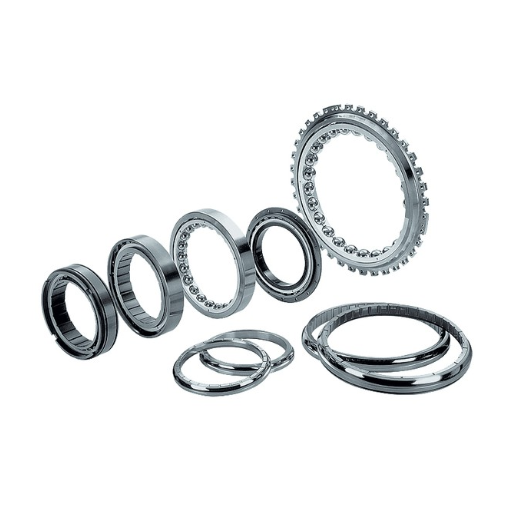
Exploring Angular Contact Ball Bearings
Angular contact ball bearings are vital for the functioning of high-performance mechanical systems because they are capable of supporting both radial and axial loads at the same time. The most distinguishing feature of these bearings is their contact angle – a measurable angle that describes the bearing ball’s axis of rotation compared to the raceway’s perpendicular line. This holds value for precision and dynamic stability applications because it directly affects the bearing’s load and axial stiffness.
Modern designs of angular contact ball bearings incorporate new materials like hybrid or ceramic balls and better lubrication systems. These improvements help in reducing heat and friction, increasing the lifespan in extreme conditions. For example, advanced aerospace applications require bearings that can operate at rotational speeds of over 2 million dN. With the newly advanced bearing designs, this demand can now easily be met.
Recent advancements in predictive maintenance systems with embedded tools have improved the monitoring of contact bearings. Integrated systems supply real-time measurements of temperature, vibration, and lubrication which are very important to preemptive failure, prevention, and operational optimization. Alongside this, FEA and CFD are more frequently used to model the bearing internals and optimize the internal geometry for better precision and load distribution.
Robotics, aerospace, and renewable energy industries utilize angular contact ball bearings as workhorse components due to their unmatched versatility. In aerospace, these bearings are used at the most demanding applications like in the jet turbine engines and satellite systems, where bearings face extreme environmental ranges; vacuum conditions at high altitudes, and high temperatures.
Applying advanced technologies with strong engineering principles has enabled the development of contact ball bearings across many industrial and mechanical domains, making them set the benchmarks for efficiency, reliability, and innovation.
Advantages of Angular Contact Bearings in High-Speed Applications
- High Load-Carrying Capacity: Angular contact bearings enable axial and radial loading concurrently, which is why they are suited for high-speed rotational applications with varying dynamic forces acting on them. This characteristic is made possible by the bearing’s specific angular configuration, which optimally distributes pressures on the bearing surfaces.
- Superior Performance under High Speeds: In comparison to other types of bearings, angular contact bearings increase performance reliability by further minimizing friction and heat under very high rotational speeds. For instance, over 10,000 RPM, these bearings can maintain their structural integrity, have low friction coefficients, and provide smooth, consistent operation.
- Improved System Rigidity and Operational Precision: In angular contact bearings, the preloading feature is very helpful in enhancing system rigidity while maintaining a high degree of operational accuracy. This feature is particularly important in CNC machines and robotics, where tiny deviations translate to enormous performance problems.
- Improved Thermal Stability: Angular contact bearings with ceramic rolling elements and advanced lubricants can operate at extremely high or low temperatures. The optimum operating temperature of these bearings is often between -30°C and 150°C.
- Prolongation of Service Life: Usage of modern materials combined with advanced design features, like the optimized internal configuration of angular contact bearings, lowers deterioration and fatigue. For example, a study reports that angular contact bearings outperform ball bearings by 30% in lifespan, which makes them useful in high-usage regions like aerospace or automotive industries.
These benefits allow angular contact bearings to outperform in extremely demanding, high-speed applications.
Understanding Radial and Thrust Load Handling
Angular contact bearings are more versatile than other types because they can handle both radial and thrust loads in dynamic applications. As the name indicates, radial loads are perpendicular to the shaft, while thrust parallel. Every bearing is designed to accommodate thrust loads through the angular contact which corresponds with placing of the contact angle. The intersection of these capabilities stems from unique geometry and physical properties of the bearing.
Recent innovations in bearing technology allow them to take on extreme load conditions. Bearings set with optimized contact angles of 15°, 25°, and even 40° are now the industry standard. The variation enables engineers to fine-tune the thrust-to-radial-load ratio. Studies confirm that increasing the contact angle boosts permissive thrust load while compromising radial load efficiency. This is especially crucial in high-speed applications like turbine rotors, which encounter unbalanced loads or automotive gearboxes.
The shift to using hybrid bearings with ceramic rolling elements and steel or composite raceways has been noted to improve load handling capabilities by around 25%. This enhancement minimizes slippage and deformation while sustaining heavy loads, maintaining a long service life and operational reliability in even the harshest environments with extreme vibrations or temperatures. As a result, these features make hybrid bearings critical in high-precision fields like robotics, aerospace propulsion systems, and industrial machinery.
How to Choose the Right Precision Bearings for Your Needs?
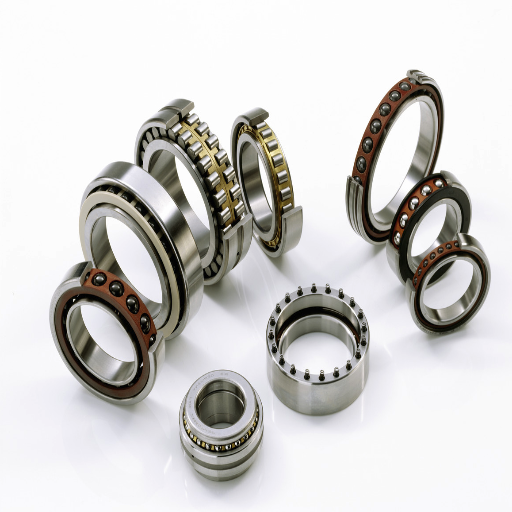
Understanding Precision Ratings and Tolerances
Choosing ball bearings for operations with high performance needs requires, among other factors, tolerance levels and precision rating. Under the auspices of international bodies such has the International Organization for Standardization (ISO) and the Annular Bearing Engineers’ Committee (ABEC), bearings are graded according to the level of precision it offers. These grades take into account the wonders of measuring deviation distance, together with the interactions with various loads and the rotational smoothness.
In the medical and aerospace systems where devices operate with precise accuracy and negligible runout, ABEC 9 and ISO P2 fall under the high precision class, which is useful. General standard ISO P6 and ABEC 3 class come with some degree of precision, enough for industrial activities. Balance must be achieved between the tolerance needs and the application to enhance system operation while avoiding the costly matrix of over-specified bearings.
Like fit, tolerance grades also determine the level of vibration, thermal expansion, and operational noise, which are only some of the performance measures. Best use of these factors allows the bearings to encounter operational strain without compromising consistent, optimal performance.
Choosing Between Ball Bearings and Roller Bearings
Knowing the type of load, speed, and the operating environment is essential in choosing between ball bearings and roller bearings. Offering frictional resistance and maintaining structural integrity, ball bearings with spherical rolling elements are used in a variety of applications, from precision instruments to electric motors and even aerospace applications, because they effectively manage axial and radial loads. Friction and load minimization during faster rotations is achievable due to the construction of such devices. On the other hand, roller bearings that have cylindrical rolling elements are preferable in industrial machinery and construction equipment because they are better at managing heavy shock loads and radial loads. Roller bearings are suitable for heavy-duty machinery like conveyor systems.
These examples highlight the evolution of bearing technology. Hybrid ball bearings that use ceramic rolling elements are one of such advancements as they offer better efficiency at high speeds, thermal expansion, and wear, unlike traditional steel bearings. In addition, self-aligning spherical roller bearings are another one. They are spherical roller bearings that have enhanced optimization for tolerating misalignment in heavy-duty environments, which makes them more reliable in unpredictable operating conditions.
Selecting a bearing type demands a thorough evaluation of operational such as load distribution, speed, and even temperature. The chosen method for an inflexible seal or cap also requires a decision process for lubrication that ensures long-term productivity while avoiding overuse of resources, while providing and preventing excessive deterioration and failure.
What Innovations are Shaping the Future of Precision Bearings?
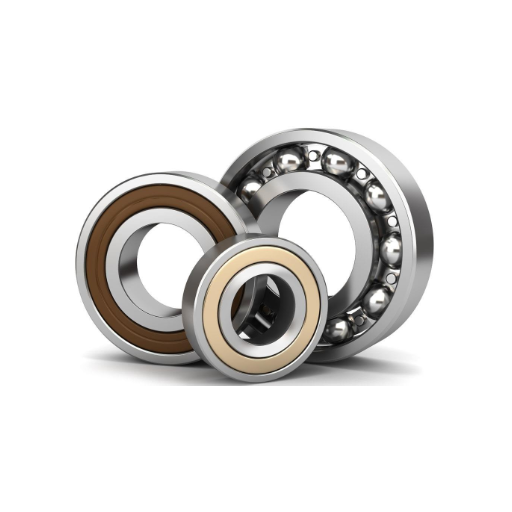
Advancements in Precision Bearing Manufacturing
The need for improved efficiency, performance, and durability across multiple sectors drives modern changes in precision bearing manufacturing. The adoption of additive manufacturing technologies, such as 3D printing, which allows for the production of custom bearings with intricate geometries, is one of the most notable advances. Such designs enable better operational efficiency through optimally reduced load distribution and material waste.
Bearing materials have also been noted to undergo other innovations. The creation of hybrid bearings that utilize steel raceways and ceramic rolling elements resulted in products with enhanced strength-to-weight ratio, thermal expansion, corrosion resistance, and wear. Also, the application of advanced composite materials, like diamond-like carbon (DLC), helps reduce surface degradation, friction, and extend the lifespan of the bearing under harsh conditions.
Smart technologies and automation now boost production processes even further. Bearing manufacturing is now integrated with machine learning algorithms and real-time analytics, enabling quality control, wear pattern prediction, and production cycle optimization. Such advances permit manufacturers to produce axial and radial bearings with improved consistency and tighter tolerances at lower cost and more efficiently, satisfying the rigorous requirements of aerospace, robotics, and renewable energy industries.
Lastly, high-performance applications rely on precision bearings that are better supplemented with advanced lubrication systems. Incorporating solid lubricants and adaptive smart lubricants helps achieve lowered operational maintenance and upkeep requirements while ensuring sustained long-term performance. Ensuring reliability in demanding environments, these innovations are revolutionizing precision bearing manufacturing, enabling next-gen solutions for a rapidly evolving industrial world.
The Impact of New Materials and Designs
The practice of precision engineering has greatly evolved with the incorporation of innovative materials as well as state-of-the-art design techniques. These innovations have made industrial components much more versatile in terms of durability, usability, and performance across varying operating conditions. Various new materials and designs are specifically aiding in advancing the use and capability of precision bearings. The following are five of the most impactful advancements in design and materials:
- Ceramic Materials: Silicon nitride ceramic bearings are currently one of the best options in the market due to its heightened hardness and low weight, especially when compared to steel. This property boosts speed and decreases inertia, with data supporting almost 30% efficiency in high-speed applications. In addition to these benefits, ceramic materials resist corrosive wear greatly, which leads to an extended operational lifespan.
- Composite Structures: New designs hybrid with advanced fiber reinforced polymers and metallic materials have also been developed. In addition to being weaker in mass by almost 40%, these structures possess enhanced vibration dampening properties, making it useful for precision applications using dynamic loads.
- Nanotechnology Coatings: Carbon like diamond coatings are an example of nanocoating which improves wear resistance, has 50% less friction, and increased thermal conductivity. This allows for better bearing performance during extreme temperatures which is essential for automotive and aerospace industries.
- Additive Manufacturing: Additive manufacturing or 3D printing provides new design possibilities AM has the capability to manufacture complex geometries that were not possible using traditional methods which optimizes weight reduction and creates custom components that are designed for specific operational requirements. Current uses indicate that manufacturing lead time is lowered by about 20-30%.
- Self-Healing Materials: Materials that can repair themselves are autonomously capable of repairing damages like micro-cracks, but also ensure prolonged operational reliability. Self-healing polymers with microcapsules can release an adhesive or resin and be restored to working order, which helps in maintenance and repair costs
These advanced materials and designs increase the efficiency of the systems industries are using, but also provide sustainable and cost-effective solutions to critical engineering problems.
Future Trends in High Precision Bearings
Like all other industrial components, these bearings are increasingly becoming multifunctional systems. The trends observed and the expected developments mention modified or newly developed materials, increased automation, and new interfaces for multifunctional and multifunctional designs, which include additional nonbearing functions with a bearing function.
Ceramics enabled new areas of applications for high speed and low wear applications. Depending on the composition and microstructure, polymer composites can even compete with metals. Modern aerospace and defense sectors capitalize on this by adopting carbon fiber reinforced plastics for fuselages of advanced military jets and turbine engines.
High Speed and super precision bearings will follow general 3D printing technology advances and their use in ordinary households. With the introduction of new materials and technologies, customized prints for unique requirements will also appear.
Economic, social and environmental aspects are becoming environmentally friendly and sustainable stratigies. These aspects focus on process design and manufacturing while using recyclable materials and optimizing energy. The bearing industry is dramatically aiding the directional change towards more environmentally friendly technological systems and energy systems which is resulting in innovation and invention of green high precision bearings.
Frequently Asked Questions (FAQ)
Q: What are the key features of precision cylindrical roller bearings?
A: Precision cylindrical roller bearings are designed for high-speed and high-accuracy applications. They typically feature a cage that helps maintain precise alignment, and they are often used in machine tool applications due to their ability to handle radial loads with greater precision.
Q: How do ball screw support bearings enhance machine performance?
A: Ball screw support bearings, such as precision angular contact ball bearings, provide critical support in linear motion systems by reducing friction and ensuring smooth operation. These bearings are essential in applications requiring high precision and accuracy, such as CNC machines and other machine tool applications.
Q: What advantages do super precision angular contact ball bearings offer?
A: Super precision angular contact ball bearings offer high speed, greater precision, and excellent load-carrying capacity. They are designed with a 25° contact angle and can handle both radial and axial loads, making them ideal for high-speed machining and other demanding applications.
Q: Why are deep groove bearings commonly used in various applications?
A: Deep groove bearings are versatile and can handle both radial and axial loads, making them suitable for a wide range of applications, from automotive to industrial machinery. Their simple design and durability make them a popular choice for many engineers and manufacturers.
Q: How do super-precision cylindrical roller bearings differ from standard bearings?
A: Super precision cylindrical roller bearings offer enhanced accuracy and load-carrying capacity compared to standard bearings. They are manufactured to tighter tolerances and often include features like special radial clearance and specialized cages, making them ideal for high-performance machine tools.
Q: What is the significance of the P4 precision class in precision bearings?
A: The P4 precision class indicates a higher level of manufacturing precision, resulting in better performance in terms of accuracy, speed, and load capacity. Bearings with this classification, such as the 6007tbr12p4, are used in applications requiring exceptional precision, like high-speed spindles.
Q: Why are miniature bearings important in specialized applications?
A: Miniature bearings are crucial in applications where space is limited and precise motion is required. They are used in devices such as medical instruments and small electric motors, where their small size and high precision enable efficient and reliable operation.
Q: What role do taper rollers play in precision bearing applications?
A: Taper rollers are used in bearings to accommodate combined loads, both radial and axial. Their design allows them to handle higher speeds and greater precision, making them suitable for applications like automotive wheel hubs and industrial machinery.
UCTH213-40J-300 with Setscrew(inch)
CNSORDERNO: Normal-duty(2)
TOGN: UCTH213-40J-300
SDI: B-R1/8
SD: 2 1/2
UCTH212-39J-300 with Setscrew(inch)
CNSORDERNO: Normal-duty(2)
TOGN: UCTH212-39J-300
SDI: B-R1/8
SD: 2 7/16
UCTH212-38J-300 with Setscrew(inch)
CNSORDERNO: Normal-duty(2)
TOGN: UCTH212-38J-300
SDI: B-R1/8
SD: 2 3/8
UCTH212-36J-300 with Setscrew(inch)
CNSORDERNO: Normal-duty(2)
TOGN: UCTH212-36J-300
SDI: B-R1/8
SD: 2 1/4
UCTH211-35J-300 with Setscrew(inch)
CNSORDERNO: Normal-duty(2)
TOGN: UCTH211-35J-300
SDI: B-R1/8
SD: 2 3/16
UCTH211-34J-300 with Setscrew(inch)
CNSORDERNO: Normal-duty(2)
TOGN: UCTH211-34J-300
SDI: B-R1/8
SD: 2 1/8










